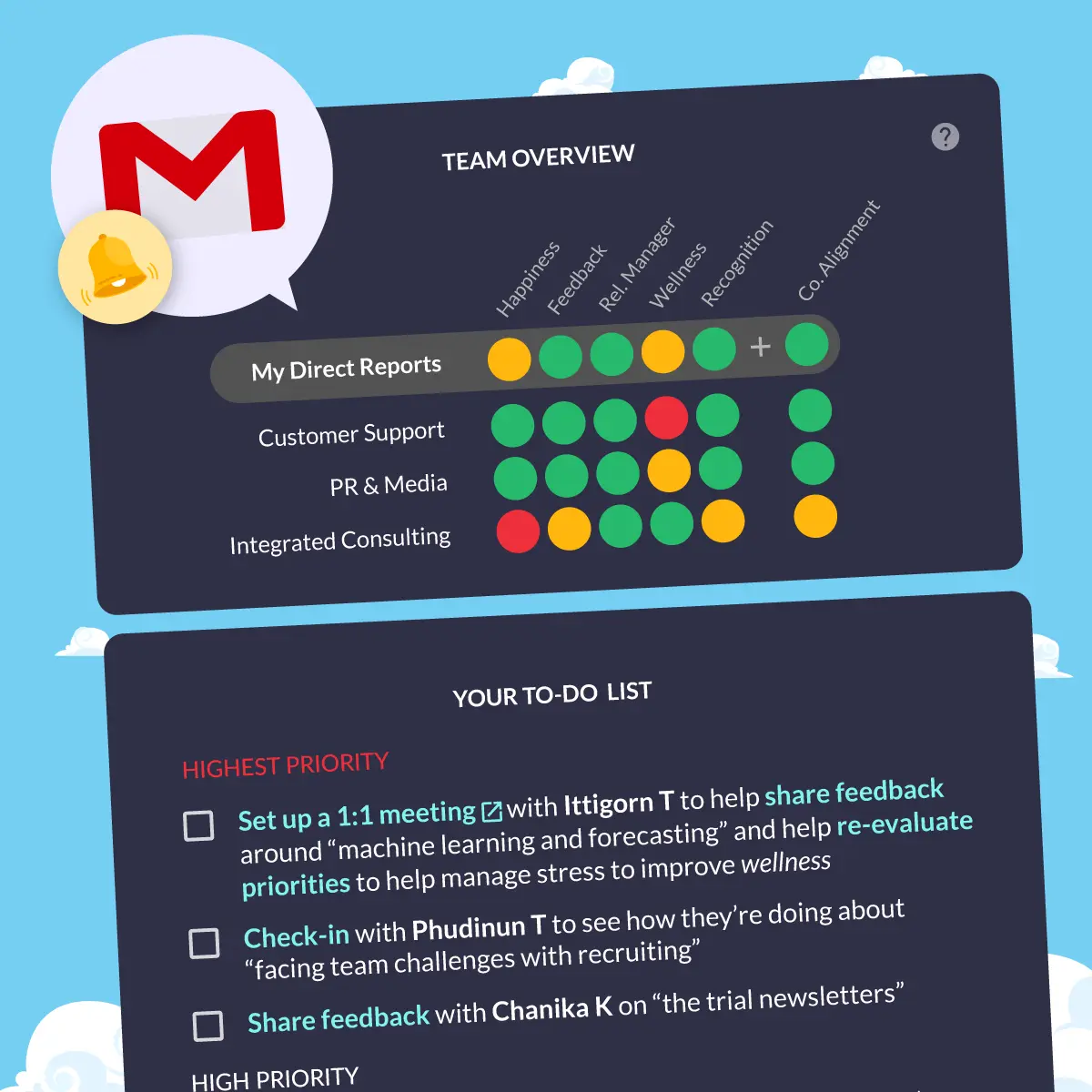As organizations look for ways to improve employee engagement, productivity, and overall performance, many are turning to the concept of behavioral nudges. In this article, we'll explore what a nudge is, how they work, and why they're a great tool for the workplace. We'll also provide examples of nudges that organizations can use to improve outcomes in the workplace.
What is a Behavioral Nudge?
A nudge is a subtle and indirect method of encouraging or discouraging certain behaviors. It is designed to influence the choices that people make without forcing them to make a particular choice. Nudges are based on the idea that people are more likely to make positive choices if they are presented with the right information and incentives.
How Do Nudges Work?
Nudges work by leveraging behavioral science to influence the choices that people make. They can be as simple as changing the layout of a workplace to encourage more social interaction or as complex as designing a reward system to motivate employees to achieve specific goals.
Applying Nudges in the Workplace
Nudges are a great tool for the workplace because they can be used to encourage positive behaviors and outcomes without being too controlling or prescriptive. They can help organizations create a positive culture, encourage healthy habits, and promote teamwork and collaboration.
Examples of Nudges in the Workplace
- Situational Nudges: These nudges involve changing the physical environment to encourage certain behaviors. For example, placing healthy snacks at eye level in the break room can encourage employees to make healthier choices.
- Default Nudges: Default nudges involve setting a default option that encourages a particular behavior. For example, setting up an automatic enrollment in a 401k program can encourage employees to save for retirement.
- Social Nudges: Social nudges involve using social influence to encourage certain behaviors. For example, creating an internal recognition program that rewards employees for collaborating and sharing knowledge can encourage teamwork and collaboration.
- Feedback Nudges: Feedback nudges involve providing feedback to employees to encourage positive behaviors. For example, providing regular feedback to employees on their performance can encourage continuous improvement.
Best Practices for Designing a Successful Nudge
Designing a successful nudge requires careful attention to the principles of behavioral science and an understanding of the specific context in which the nudge will be applied. Here are some best practices to consider when designing a nudge, with a corresponding example of nudging managers to initiate one-on-one meetings with their team:
- Identify the specific behavior you want to influence: A nudge should be designed to influence a specific behavior, such as improving communication or encouraging healthier eating habits. It's important to be clear about the behavior you want to target, as this will guide the design of the nudge.
We want to encourage managers to take the first step in scheduling and preparing for these meetings. - Understand the barriers and context: To design an effective nudge, you need to understand the barriers that are preventing the desired behavior from occurring. These barriers can be physical, psychological, social, or cultural in nature. It's also important to consider the context in which the behavior occurs, as this can impact the design and implementation of the nudge.
The barriers to initiating one-on-one meetings can include a lack of time, competing priorities, and uncertainty about how to structure the meetings. - Choose the right nudge: There are many different types of nudges, including default nudges, social nudges, feedback nudges, and more. Choosing the right type of nudge depends on the behavior you want to influence, the barriers you need to overcome, and the context in which the behavior occurs.
A feedback nudge can provide positive reinforcement and recognition for managers who initiate one-on-one meetings. For example, a nudge sends a congratulatory email to managers who successfully initiate a one-on-one meeting with their team members. - Make it easy: One of the most important principles of behavioral science is to make the desired behavior easy to do. This means designing nudges that require minimal effort or cognitive load, and that are well-integrated into the daily routines of the people you are targeting.
Make the one-on-one meeting a default recurring event on the manager's calendar with their direct reports. Or using a feedback platform that automatically initiates conversations between managers and their teams. - Test and iterate: Nudges should be tested and refined over time to ensure that they are effective and sustainable. It's important to measure the impact of the nudge and make adjustments as needed to improve its effectiveness.
Measure the impact of the feedback nudge on the frequency and quality of one-on-one meetings, and make adjustments as needed to improve its effectiveness.
By following these best practices, you can design nudges that are effective, sustainable, and aligned with the principles of behavioral science. Whether you're trying to encourage managers to initiate one-on-one meetings, improve workplace culture, encourage healthy habits, or drive organizational change, a well-designed nudge can be a powerful tool for achieving your goals.
How an FMCG used nudges to improve workplace culture
An FMCG in Thailand was struggling to foster a collaborative work environment. In this company, departments tended to work in silos, with little interaction between teams. This resulted in inefficiencies and missed opportunities to leverage the diverse talents of the workforce.
To address this issue, the company implemented a social nudge in the form of an internal recognition program. The program was designed to reward employees who collaborated and shared knowledge across teams. The company used a recognition software called Happily.ai to launch their recognition program. They also made sure that rewards were publicized and celebrated across the organization.
Over time, the program began to have a significant impact on the company culture. Employees began to seek out opportunities to collaborate with colleagues in other departments, and managers began to recognize and reward cross-functional teamwork. The company experienced a noticeable increase in productivity and innovation as a result of this social nudge.
What happened in just a few months at the Thai FMCG shows how social nudges can be a powerful tool for improving workplace culture. By creating incentives and promoting positive behaviors, organizations can shift the culture and improve outcomes. Social nudges like the recognition program are effective because they tap into the social nature of human behavior and leverage our innate desire for social acceptance and recognition.
Conclusion
Behavioral nudges are a powerful tool for improving workplace culture and encouraging positive behaviors. By understanding the principles of behavioral science and applying best practices for designing successful nudges, you can influence the actions and attitudes of your colleagues and employees. Whether you're trying to encourage healthy habits, promote teamwork, or drive organizational change, a well-designed nudge can be a game-changer. So why not give it a try? Use these tips to design your own effective nudge, and watch as small changes lead to big results in the workplace.
Want a head start? Check out how Happily.ai uses behavioral nudges to create a healthy workplace with happy, high-performing teams.












